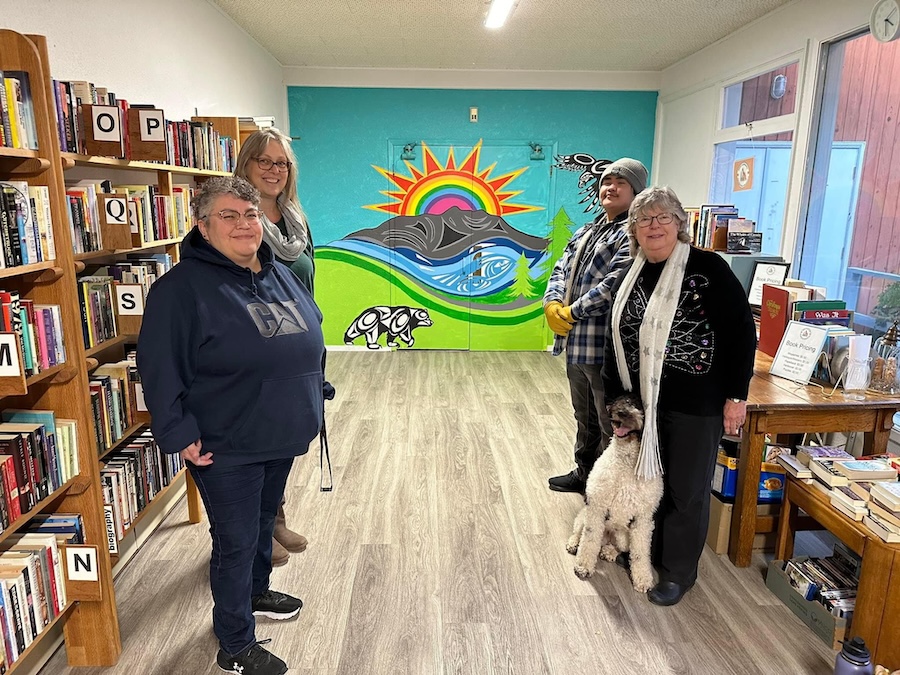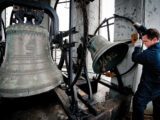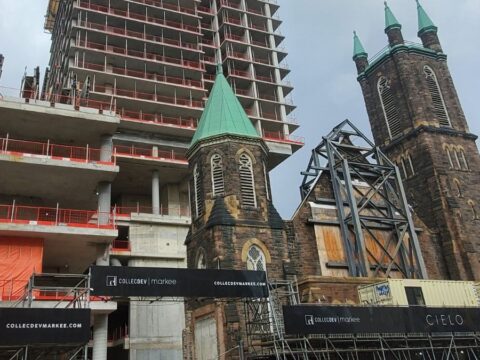“It’s a shame you have one really big, ugly white wall when the rest of the church has so much loving. You might know someone who could change that.”
So said Geena Haiyupis, a 45-year-old Hesquiaht artist, to Tam Vilette, secretary for the worship team at Alberni Valley United, and that set in motion the creation of a great work of art.
You may unsubscribe from any of our newsletters at any time.
Vilette mentioned her conversation with Haiyupis to Mary Heatherington, the church’s truth and reconciliation steward, and Heatherington reached out to Haiyupis to talk about creating a mural on the church’s “big, ugly white wall.”
Alberni was the site of one of the most abusive Indian Residential Schools, which the United Church of Canada ran from 1925 to 1966. It was vital to the artist that the mural represent the work Alberni United has committed to healing the hurt residential schools caused. Haiyupis consulted extensively with people who attend events at the church, both Indigenous and non-Indigenous.
The mural’s sun represents growth and the rainbow within it symbolizes inclusivity of all people, Haiyupis says. The bear represents strength, abundance and planning for the future, passes along teachings to future generations and provides a sense of home. The salmon and river honour the ancestral lands of Indigenous people. Haiyupis says it was important to include the eagle because it was upon eagle feathers that prayers were brought to the ancestors.
Once the actual painting started, Haiyupis invited others to join her. Many were non-Indigenous people who had never painted before.
Haiyupis brought an understanding to her work of the effect residential schools had on Indigenous people because three generations of her family suffered at those schools. Her mother went to Alberni Indian Residential School, her father to Kuper Island Indian Residential School. She and her siblings were placed in Christie Indian Residential School, where her mother took a job working in the laundry and kitchen, a job, Haiyupis suspects, her mother took to be close to her children.
After the siblings left residential school, they were sent to separate foster homes. Despite the challenges they faced, Haiyupis reflects on all they achieved in healing and learning to love.
“I would say one of the hardest things for me to do was learning how to be loved and to love others. My children taught me how to love for the first time.”
More on Broadview:
- Dr. James Makokis brings traditional Cree approaches to transgender medicine
- Indigenous Healing Centre inside United Church could help people struggling with work and finances
- Youth-led mural promotes reconciliation at Winnipeg United Church
Many former students of Alberni Indian Residential School have spoken out about the physical and sexual abuse they experienced there. Willie Blackwater was the first student to speak out about Arthur Henry Plint, a former boys’ supervisor, for abuse he inflicted on students. Former students also telling their stories led to legal action against Plint and Donald Bruce Haddock, a dorm supervisor.
In 1994, Plint pleaded guilty to 18 counts of sexual assault that took place between 1948 and 1968. He was sentenced to 11 years in prison where he died of cancer in 2003.
Donald Bruce Haddock pleaded guilty in 2003 to four counts of indecent assault that occurred between 1948 and 1954. He was sentenced to 23 months.
The former students launched a civil lawsuit against the federal government, which owned the Alberni residential school, and the United Church, which operated it. The trial, with Blackwater’s name as the lead, lasted three years. Blackwater and his lawsuit forced the church and government to take notice.
Twenty-five percent of the liability from the civil suit was assigned to the church, the other 75 percent assigned to the government. The United Church established a reconciliation program to address its past mistreatment of Indigenous peoples. In 2018, Alberni Valley United Church invited Nora Martin, a residential school survivor and member of the Tla-o-qui-aht First Nation, to join their Reconcili-action group.
Martin and two other survivors attended the Reconcili-action meetings, where they shared their experiences at the schools to help the church better understand the challenges they faced. Haiyupis also takes part in the church’s Reconcili-action program.
“[The Reconcili-acton program] holds a space for Indigenous people, so they can be themselves unapologetically,” she said.
“When we listen, we stop and learn to be humble, compassionate and empathetic.”
***
Avil Beckford is the founder of The Invisible Mentor, The Art of Learning Leadership Academy and The One Problem podcast. She’s the author of Leadership Reading: Spilling the Tea on How Top Leaders Read. Beckford lives in Toronto.














